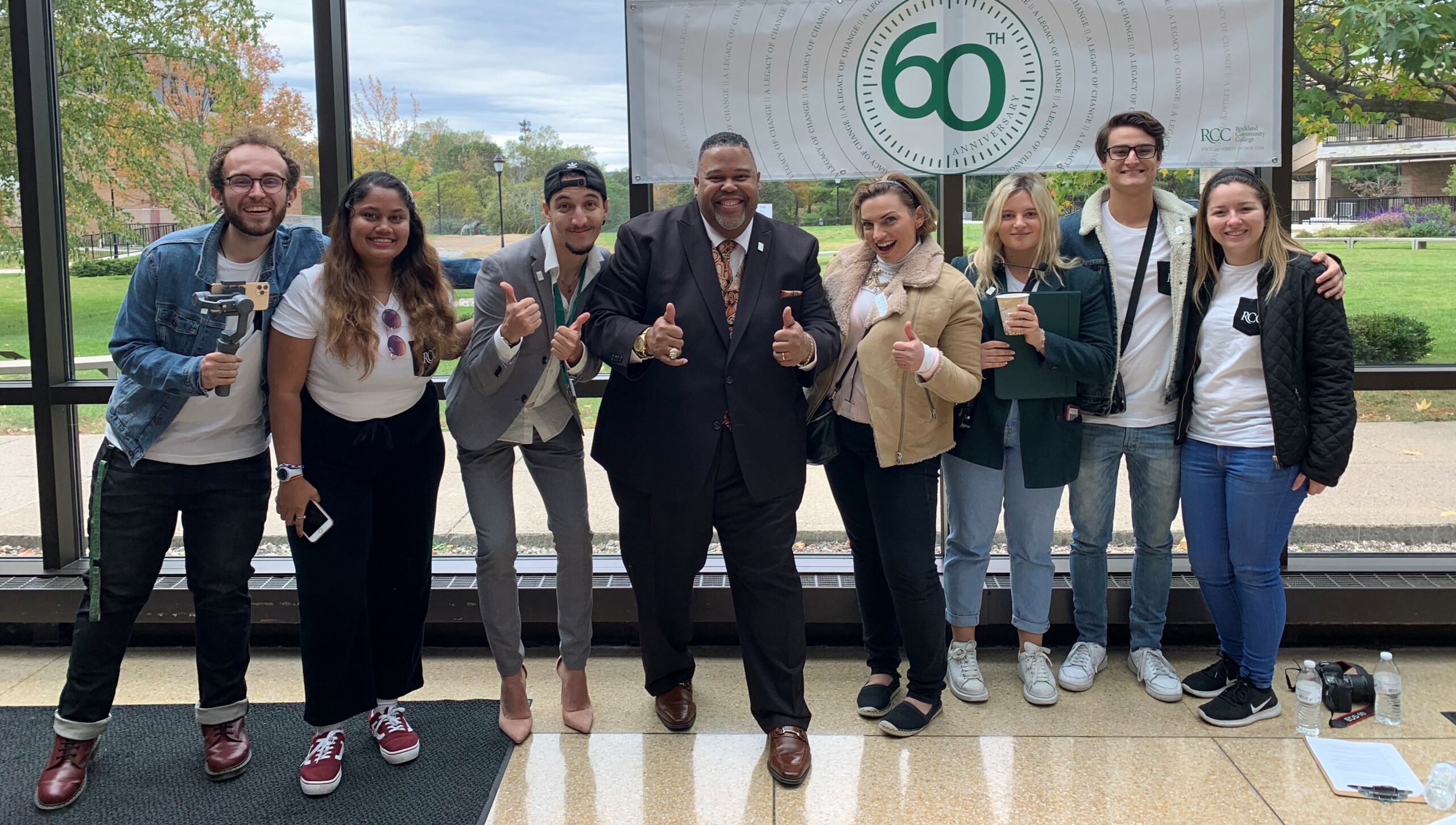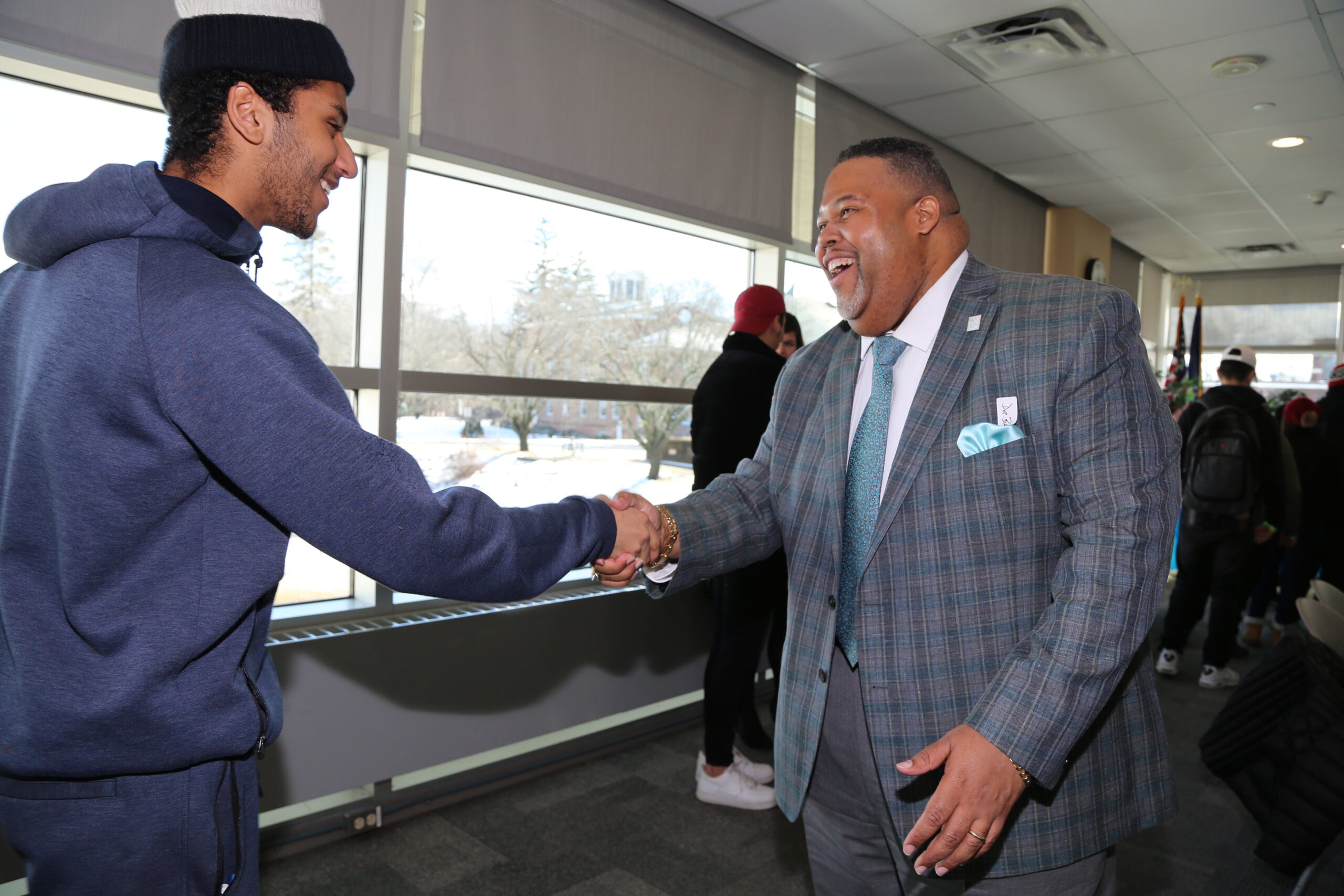Dr. Michael Baston has been fairly intentional about driving change in higher education’s most challenged sector since becoming president of Rockland Community College five years ago. He has led new diversity, equity and inclusion initiatives, forged workforce-driven pathways for students, raised more than $30 million in capital campaigns and been a national voice on completion and program design.
He never stops tinkering or thinking about the next potential partnership. But what he is most focused on is students and getting them what he calls “real-world ready.” He understands his college’s unique position in serving a very diverse population of learners and knows that the statistics the past two years haven’t very been positive: 700,000 students lost alone at two-year institutions, according to data from the National Student Clearinghouse Research Center.
So he is on a mission to get them back—and attract many more.
“We have doubled down in making sure students have experiences that prepare them for the world of work,” Baston says. “That has not always been our emphasis. We focused on preparing students for their next step—and the presumption was that was going to be a transfer, and not necessarily into entrepreneurial or workplace opportunities. That’s shifted because of the expectations of our students and the needs of our region and nation.”
Rockland’s demographics also have changed significantly, from 25% students of color 30 years ago to 52% today. Those students have a lot more options, including a variety of education paths, certificate options and the enticing jump straight into jobs. So Rockland and others are working hard to show them the benefits of higher ed – through support, partnerships and new curricula—to remain on the radar.
“We’re not in competition with other educational actors, we’re in competition with students not going to college at all,” he says. “When people look at the community colleges and ask, why is there so much contraction, what people don’t realize is that in the last major economic downturn, we did not have the rise of the convenience or gig economy. About 65 million people are now freelancers in the country. By 2028, it will probably be up to 90 million. More people will want to flex their muscles in the entrepreneurial space.”
More President Series stories from UB
- Western New England: What is a new traditional university and why is the vision so vital?
- Purdue: Growth tied to keeping students at center of bulls-eye
- Muhlenberg: Leading the way as pioneers for women
- Stetson: Why kindness has been one of the keys to Stetson’s success
- Dominican: Providing support for first-gen students
- Montana: How higher ed can work for veterans
University Business sat down with Baston, Co-Chair of Jobs For The Future’s Policy Leadership Trust, member of the National Advisory Board of Center for Community College Student Engagement and leader on the national Education Design Lab’s Designers in Residence, to learn more about his college’s many unique supports and innovations.
How do institutions like yours convince students that getting an education has potentially more value than entering the gig economy?
We must help students with wraparound support services, like child care, and give them more flexible schedules so they don’t make short-term dollars the goal. So it’s getting higher education to get into shorter-term credentials that lead to that first rung on the ladder of opportunity. Saying to students, if you can’t wrap your head around investing 2, 4 or 6 years in an educational program, let’s get you for 6 months or 18 months. Let’s get you a nationally recognized certification where you can earn a living, and give you credit for further advancement. We’re putting you in the best position on those pathways so you don’t have to take lots of loans, so you have a competitive advantage when you go for higher-level opportunities. There are colleges like mine that are thinking about stackable credentials, credits for prior learning and pathways that pay a family-supporting wage. Let’s get you on the path to the life you deserve.
What is Rockland CC doing specifically to attract and retain those who may not fit the idea of a traditional student?
All college students here are treated the same. They will always have wraparound support services. Through educational partners, we provide 24-hour, seven-day-a-week access to tutoring and virtual support. We are becoming more on-demand. We have a very robust program where students can bring their children into the same space within learning, and someone is working with their children while they’re getting tutoring and support through our connection center. We offer different learning modalities, and that’s going to continue, to provide experiences that help students feel comfortable, capable and confident moving forward.
You didn’t follow the traditional path through academia. You were a public interest lawyer. Now you’re here in the president’s chair and even teaching a class. How has that past experience helped you at Rockland CC?
If you’re going to be a president, you have to start with passion. What are you passionate about? When I was a public interest lawyer, I was passionate about helping clients lift their voice and seeing the possibility in their lives and then looking at the rules, regulations, policies, procedures and laws that often limited opportunity. It is that same critical eye that I brought to higher education. Moving into administration, because I had that experience of helping people advocate for themselves, it informs how I do my work as a college president.
I’m what you call a practitioner president. I teach in the School of Business and Professional Studies. This semester, I taught a course on civil liberties and multiculturalism. What a wonderful thing to teach to students who are sociology students as we are dealing with DEI issues that they’re going to face in the real world. I’m able to say I understand what you are experiencing. This semester, I taught synchronously online on purpose because I wanted to understand what kind of engagement it requires, the resources that faculty and students need and the upsides and downsides. I can bring those experiences into making decisions and allocating resources.
What are the linchpins to the success of good DEI programs and strategies on campuses?
We have something called Steps Beyond Statements. It’s not enough to make great statements or resolutions that say we’re going to be against bigotry in all forms. What are you going to do to address the systems that perpetuate disparate outcomes? Any institution serious about equity, diversity and inclusion has to analyze the systems that produced the inequities. We have looked at four specific milestones in the student experience and four critical junctures in the employee experience. We’ve looked at the systems that are connected to those junctures to see if they are causing inequitable outcomes. So for the students, where are we recruiting? What programs are we recruiting them into? Are we recruiting in such a way that we lock off opportunities to programs that lead to high wages and high-opportunity jobs? What do the materials look like in brochures that give people an indication of whether they’re welcome or not? For employees, where are we advertising? What does the composition of the search team look like? Do we have extra expectations beyond what’s in the job description?
What can community colleges do to stem the massive downturn in enrollments?
The critical piece for colleges is the strength of partnerships. Look for the low-hanging fruit. I sat down with the hospitals and urgent cares to talk about the critical shortages of employees. What are shorter-term programs I could offer to give you a ready workforce? What guarantees can I get that you’ll hire people? When we work together, we can solve community problems. Many corporations and communities also have foundations connected to them. We’re also working with school districts, giving students career exploration courses and college credit. I’m in favor of co-creation. You can’t just sit passively and say, I’m going to send you a list of all the courses we have; let us know which ones your people might be interested in. If that’s the approach, then passivity is the problem. We have to be active. We have to not come off arrogantly.







